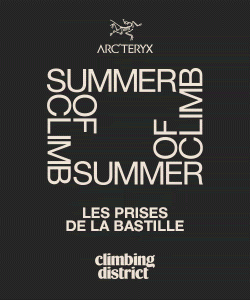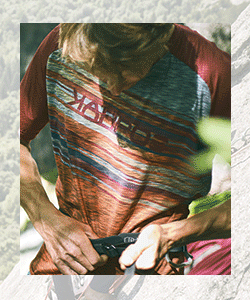Placing your feet: 9 tricks to improve your climbing sensitivity

Good foot placement is key to climbing performance. Because even if you are physically at the top of your game, if your ‘footfall’ is mediocre, you will always climb below your potential. Here are 9 little games, invented by La Fabrique Verticale, to develop feeling & improve sensitivity.
Feet. We already drew your attention to this subject in a previous french article called Technique : 4 astuces pour améliorer la pose de pied. We were very pleased to see that this article got a lot of visits. Which proves that there’s good interest in the subject! So we decided to investigate a bit further. And not only for the french audience. We suggest other things that you could try, when warming up for example on routes or problems that you have already conquered.
Focus, focus
You’re going to try to:
- Keep your eye on the hold you want to put your foot on, until your foot is actually on it. More specifically, you’re going to focus not on the whole hold, but on the spot on the hold where your big toe is going to end up.
- Place your foot in 3 phases, which will gradually merge into one movement: a rapid approach towards the hold / a pause / a very precise (and therefore slow) final approach (which is when the visual information starts to really matter).
Advice
On rounded or flat holds, you can relax the foot in the shoe (but keep your leg ‘tonic’). And let the heel drop to increase surface contact and adherence. The use of very soft shoes, like slip-ons, will be an advantage, as they will transmit more of what your foot feels.
On small edges, keep the arch of your foot tense, and contract your toes (especially the first two).

Breathe!
Still on the subject of foot placement and the sensations that go with it, you’re going to synchronise your breathing with your foot placement. In other words, you are going to try to breathe out at the same time as you set your foot down. Once your foot is down, sense the weight that you are putting on it, or the pressure that you are exerting on the hold.
Giant steps
On one or two of the following routes, you will force yourself to climb using giant steps, with your feet as far apart as possible. This will of course require you to lock off your arms to help move from one foot to the other. But it also helps you to feel more of what’s happening in your legs when you transfer your weight.
This game brings into play both physical and gestural aspects. It’s very useful for technical exercises at all levels. Beginners can do it using all available footholds. More experienced climbers might use only the smallest footholds. Or even boltholes to make things more ‘’interesting’!

Hands and feet
Again, looking to work on both the physical and technical sides, you can try to do as many hand to foot matches as possible. To play this game, the best thing is to work on a highly contoured wall. Or even on a bouldering circuit, with lots of holds. But ignoring the colours.
It’s interesting because you soon find yourself in positions that improve your flexibility and locking off capabilities. And that will require you to transfer all your weight onto your foot, before developing the leg movement. It’s up to you to find the right distance(s) between the holds.
Contrast – sensations
On a section of the wall that has something of a positive angle, climb with only one foot in a climbing shoe. The other is either bare, or in a sock or a trainer. Change the ‘shoe foot’ for each route.

Hands below your shoulders
On a section of the wall that has something of a positive angle, you can reduce the pull-up action of your arms by only allowing yourself to use holds that are below your shoulder height.
Advice
To make sure you obey the rule, you can restrain your hands using two separate pieces of rope that are attached to the tie-in loop on your harness. The length must be such that your hands cannot go higher than your shoulders.
Hacky Sack
You will need two hacky sacks. These are little balls filled with grains. They’re usually used for dribbling with your feet. Put them on the top of your shoes. The aim is to climb without them falling off! A variation on this exercise, which is about placing your feet gently and silently, consists of attaching little bells to the back of the shoes (in the loops). And trying to make sure they don’t ring!
Swings
On a section of the wall that has something of a positive angle, swing one leg out to the side while maintaining your balance on the other leg. Your hands are flat, or at least not gripping the holds very hard, to start with. Then visually pick out a foot hold and, without interrupting the movement of your leg, put your foot down on the hold as precisely as possible.
Advice
Alternate legs. And vary the amount of movement of your free leg.
Travs – Load transfers
You’re going to traverse at the bottom of a wall, or on a bouldering circuit, and try to go from A to B using the fewest possible footholds. In concrete terms, this will mean pushing your feet out really far to the side. And transferring your weight on to them.
Advice
Traverse in one direction then the other. And try to skip more and more holds as you go!










